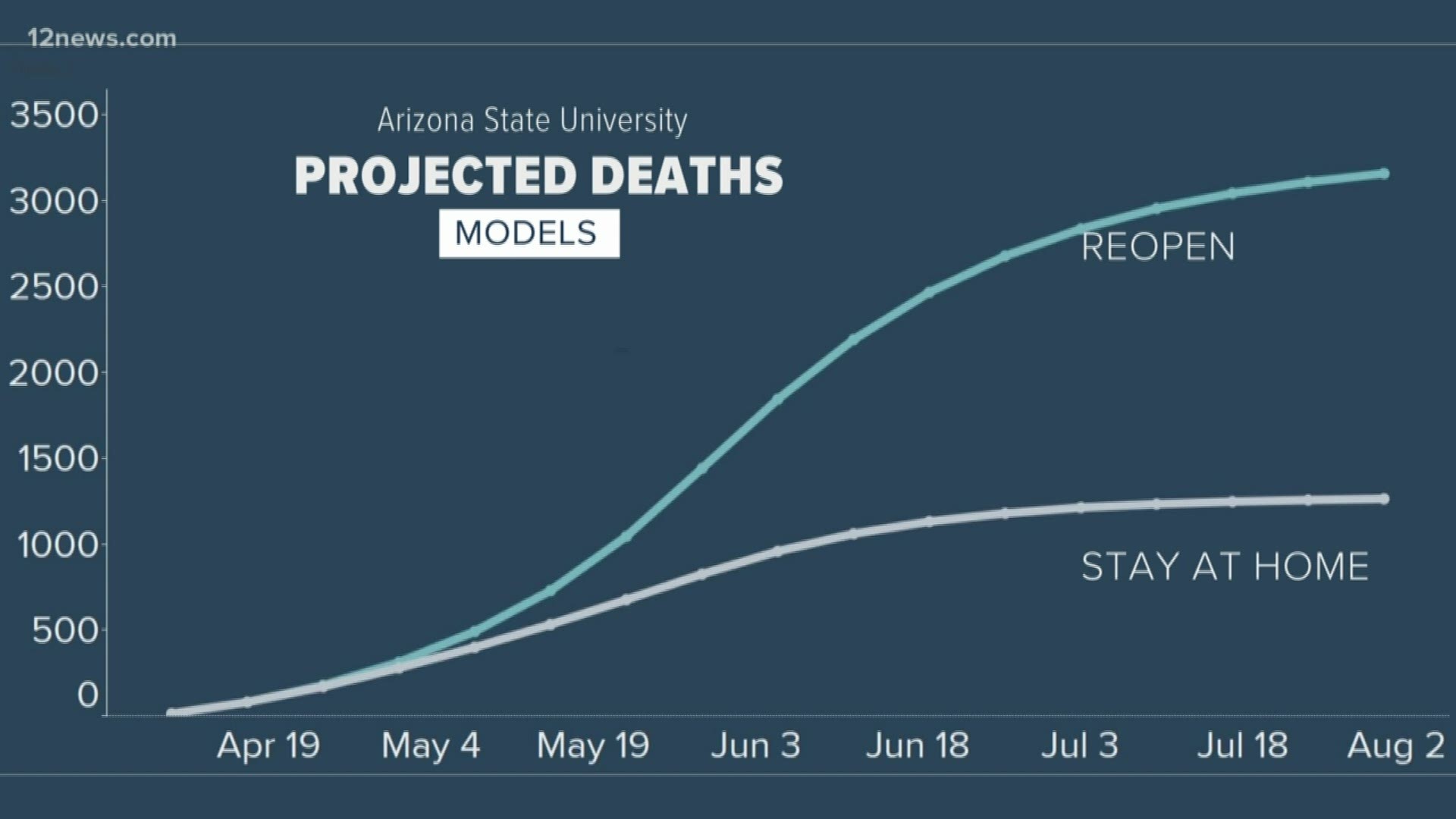As COVID-19 cases continue to increase and Arizona moves towards reopening measures, modeling by professors at Northern Arizona University is looking at what the spread of COVID-19 could look like in northern parts of the state with and without restrictions being lifted.
As of Wednesday, nearly a quarter of Arizona’s COVID-19 cases are spread across Northern Arizona.
“It’s slowed down, that doesn’t mean it’s stopped spreading, it doesn’t mean it’s declining in our communities yet,” NAU Assistant Professor Joe Mihaljevic said.
Mihaljevic and his colleagues are studying the spread of the virus with modeling across Mohave, Coconino, Navajo and Apache Counties.
"We try our best to create these models as fast as we can with the information that we have about a pathogen that no one has dealt with before,” Mihaljevic said.
Mihaljevic says while no model is perfect, he and his colleagues' modeling shows while the spread is slowing in Northern Arizona, there are variables that can change.
"If we remove restrictions too soon then, as the pathogen is still spreading and is not declining in our populations yet, then we can get exponential growth of the pathogen again,” Mihaljevic said.
He and his colleagues have been focused on helping the counties and hospitals prepare for the pandemic in the region, and have been involved with state modeling.
Mihaljevic said though that his team has been cut off from the data by the Arizona Department of Health Services, as he was told ADHS has paused their modeling.
“I really think that if there’s ever a time to have scientists working on a problem to understand what the future might look like for this pathogen, it’s now when we’re trying to open up the economy,” Mihaljevic said.
ADHS told 12 News in a statement the state completed the model on April 20, adding, in part:
“With months of data now available, we have shifted our primary focus from predictive models to using all of our real-time, Arizona specific data to assess the health of our healthcare system and evaluate the trend of our cases to make decisions that are best for Arizona.”
Now Mihaljevic and his team are trying to work with individual counties to get access to data once again to continue looking at what COVID-19 could bring.
“To say, ‘Look what could happen, under the worst-case scenarios and the best-case scenarios,’ and I would hope our elected officials would plan for the worst case,” Mihaljevic said.
MORE STORIES:


